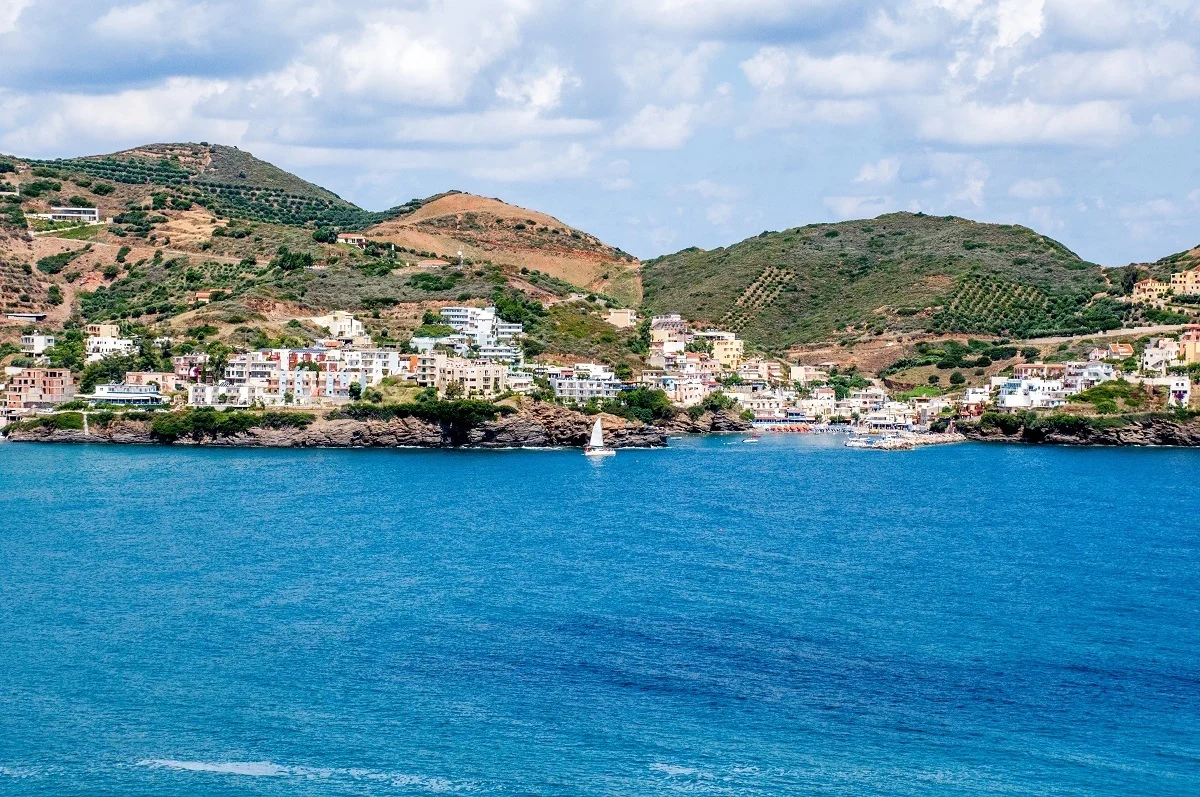
We didn’t know much about Crete when we started planning our trip to Greece. Some Greek islands are known for their beauty—the blue domes of Santorini and the white-washed buildings of Mykonos are the things dream are made of. But we had no immediate associations with Crete. Would visiting Crete be worth it?
It turns out there are lots of things to do in Crete from seeing 600-year-old frescoes in tiny villages to wine tasting and walking on pristine beaches. Visitors can hike the gorges, try the fresh seafood, and soak in the history of the ancient civilization that built Europe’s oldest city. There are so many wonderful reasons to visit Crete. These are just a few things that make us want to plan a return trip.
- Why Visit Crete
- Beautiful beaches abound
- Ancient sites are everywhere
- Food is out of this world
- A trip is surprisingly affordable
- It’s a mix of big cities and small towns
- The wineries are fabulous
- Mountaintop views will stop you in your tracks
- Historical sites have a story
- It’s easy to get to other islands
- The city harbors are lively
- There is lots of room to spread out
- Best Time to Visit
- How to Get Here
Why Visit Crete
Beautiful beaches abound

With 650 miles of coastline, Crete is a beach-lover’s paradise, and the Greeks take it seriously. It’s important to know that 400 beaches on the island have been awarded Blue Flag status, an international designation that means they comply with a long list of environmental protections and precautions. Visitors can help maintain these gorgeous places by not disturbing wildlife and vegetation and picking up any trash.
Whether a developed beach with tavernas and oceanside cocktails or a more informal, do-it-yourself kind of place, each of the beaches is lovely in its own way. There are lots of options to choose from, and the beaches are some of the best places to visit in Crete on a warm day.
Elafonisi
Probably the most famous and one of the best beaches in Crete, Elafonsi is known for being pinkish in places because of the shells that have been ground down by waves over the years. The beach is on the most southwesterly point of the island and can be challenging to reach by bus, so a rental car is recommended.
Matala
The village of Matala became famous in the 1960s and ’70s among hippies who set up residence in its Neolithic caves. Today, visitors enjoy the sand and pebble beach, the sandstone cliffs, and watching the caves light up at night.
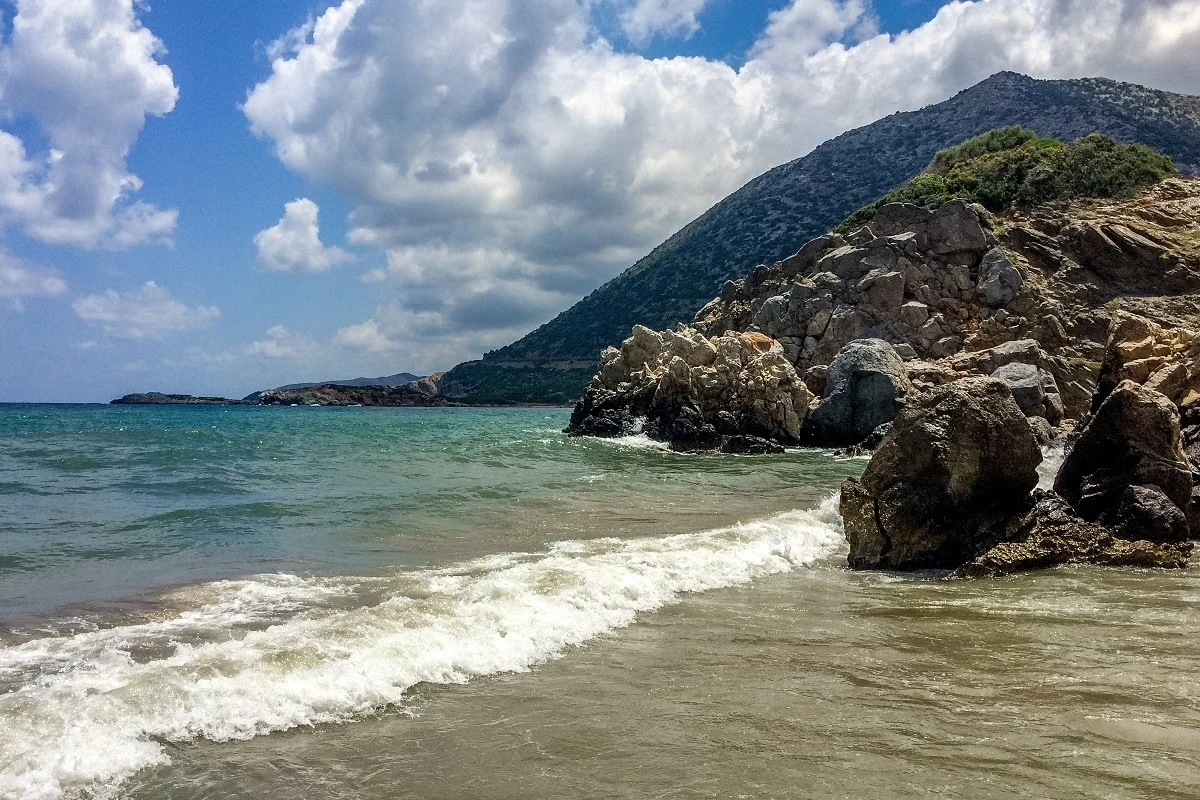
Falasarna
In the northwest corner of Crete, Falasarna is a resort area with several large sections of relatively quiet beach. The white sand makes the sea look azure blue here, and the location is ideal for sunsets. Be warned that it can get windy.
Vai
Vai is a golden sand beach backed by a dense ancient palm tree grove that gives the location a distinctive Caribbean feel. In the height of summer, it can be packed with people, so shoulder season is the best time to enjoy this spot.

Bali
No, this beach is not in Indonesia. Bali, Crete, was our favorite beach because it was walking distance from our apartment. With several sections to choose from and easy places to rent chairs and have lunch right by the water, we loved it. It’s also a great location for families because there are platforms and toys anchored right in the shallow water.
Ancient sites are everywhere
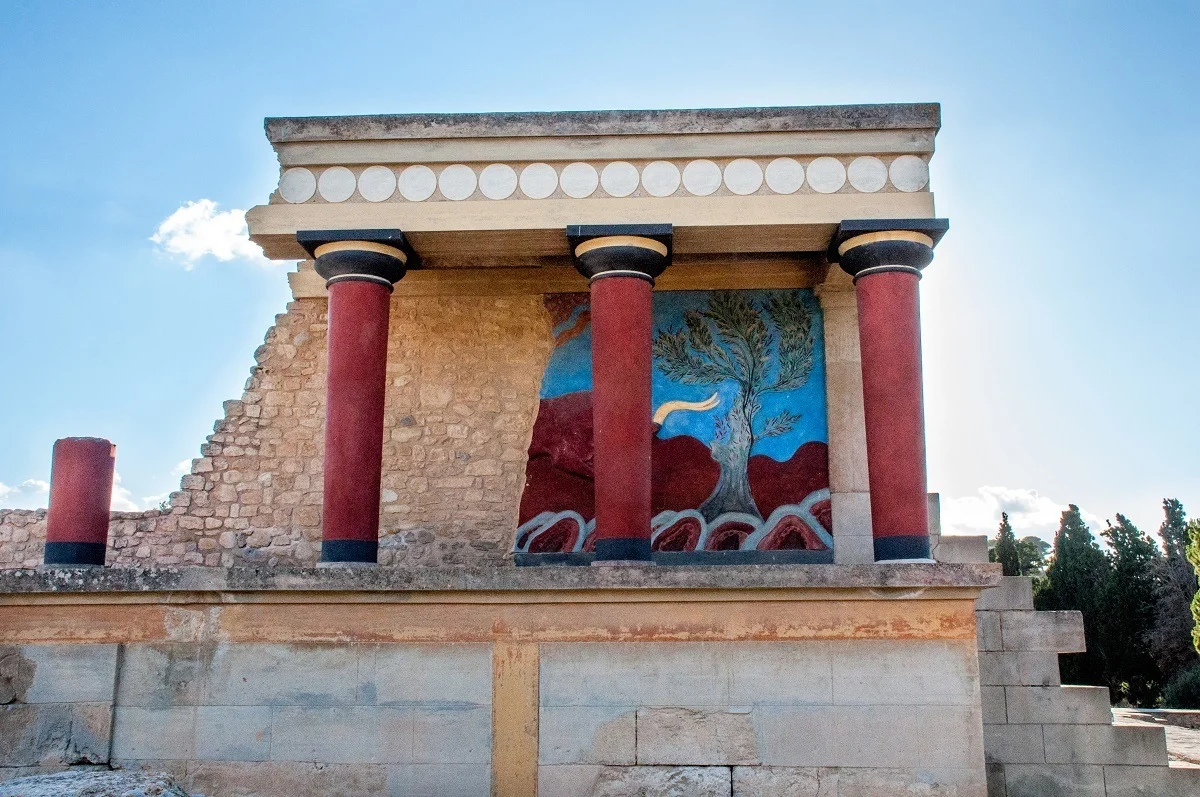
The ancient site of the Palace of Knossos is a thing of myths and legends. It’s where the half-man, half-bull Minotaur met his end at the hands of Theseus. It’s also the locations Daedalus and Icarus tried to fly from when the father warned his son not to fly his wax wings too close to the sun. That’s how important this place was—over 3000 years after its demise, its stories live on.
Though the stories are fanciful, the Palace of Knossos was a real location believed to be at a site just three miles from present-day Heraklion. It was the capital of Minoan civilization, an age that pre-dated even Ancient Greece. The labyrinthine Palace is where most Minoan political and ceremonial activity took place.
At its peak around 1700 BC, the Palace and surrounding city reached a population of 100,000 people. The Bronze Age site is often referred to as Europe’s oldest city.
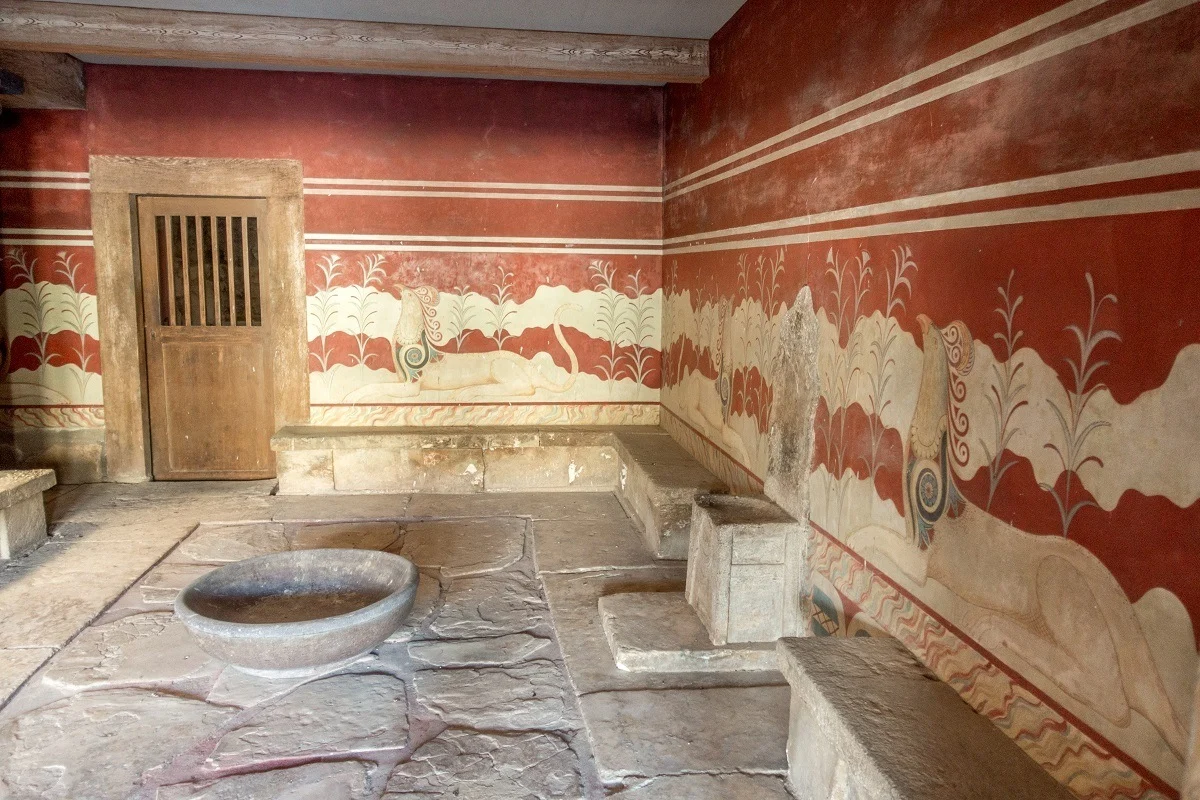
Excavation of the Palace of Knossos began in 1900. The archaeologist used modern materials to preserve and restore some of the buildings, which has led to an interesting mix of ancient ruins and frescoes that feel partially authentic and partially garish. Regardless, if you’re at all interested in history and culture, the Palace is one of the top things to see in Crete.
The Palace of Knossos is the largest—but certainly not the only—ancient site to visit. Near the southern coast, you can see the ruins of the city of Phaestos, the second-largest Minoan city that was inhabited from about 4000 BC. East of Knossos is the Palace of Malia, which dates from about 1900 BC.
Much of what is left at the palace sites are the shells of the ancient complexes. In general, the treasures can be found at the Heraklion Archaeological Museum. One of the top historical attractions, it’s the foremost place to find Minoan art.
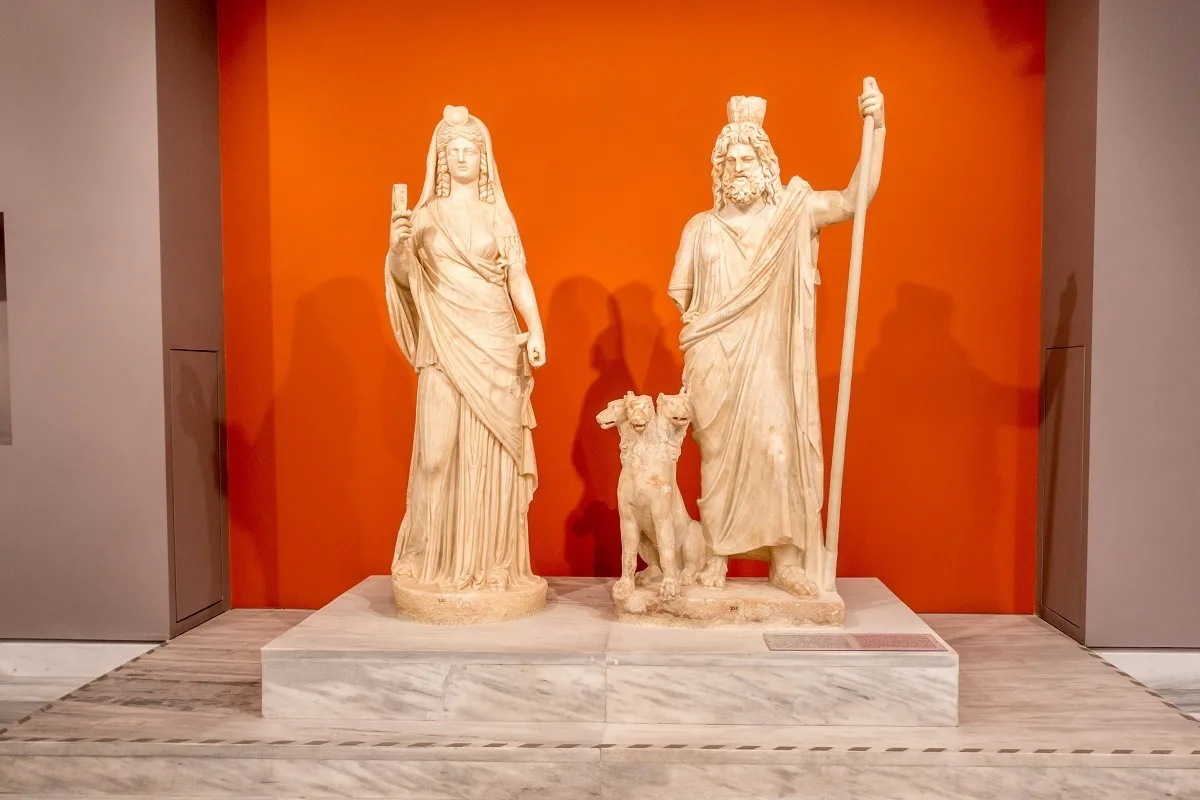
At the archaeological museum, you’ll find endless artifacts from the palace sites and beyond. There is jewelry, pottery, weapons, and magnificent statues from throughout 5500 years of Cretan history up to Roman times.
We loved the golden pendant with bees—a jewelry masterpiece from Malia—and the famous Phaistos disc, a clay disc embossed with signs that have never been decoded. A visit to the museum will help you understand the complex and beautiful history of the island. Don’t miss it.
Food is out of this world
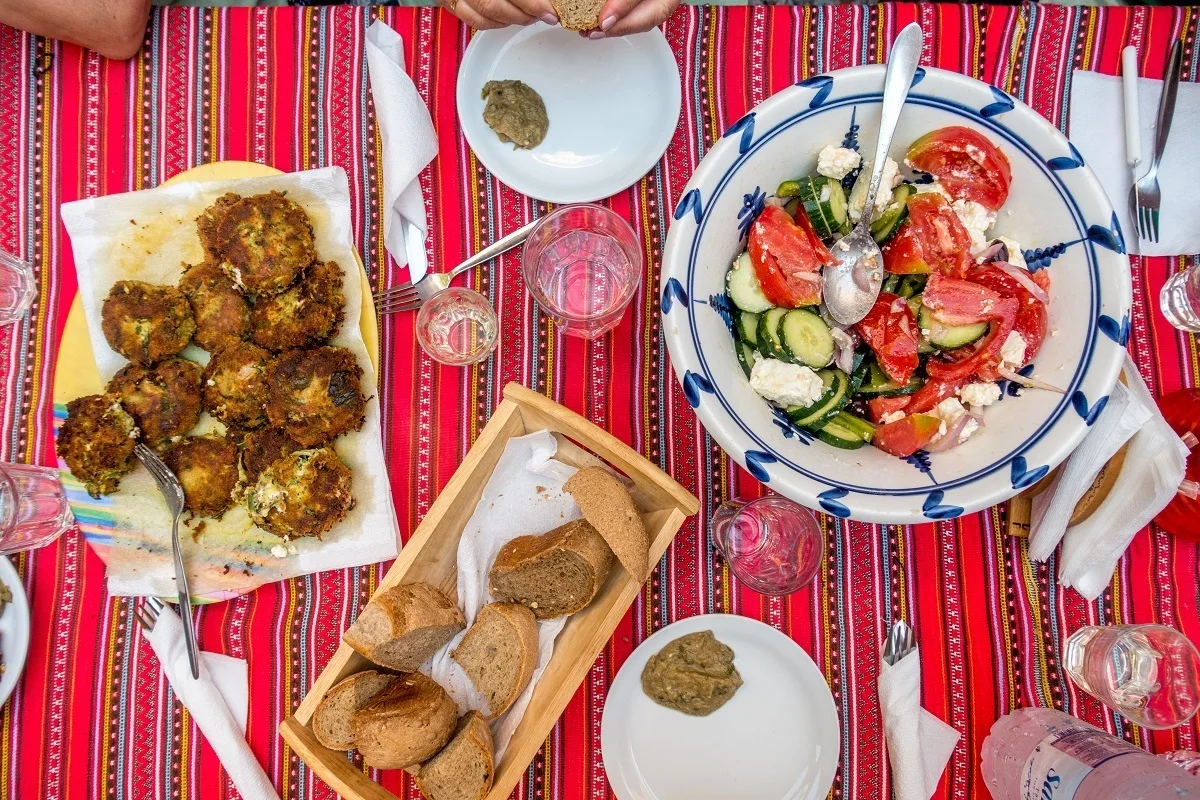
There is so much to love about Cretan food that it’s hard to know where to start. So I’ll start here: make sure to pack pants with an elastic waist. We took a food tour in Athens and extended our exploration of local cuisine with a cooking class in Vamos during our Crete vacation, and we still couldn’t get enough of the salads, cheeses, and other flavorful Greek food.
Cretan food is influenced by two primary things—the varied cultures that have passed through the island over its long history and the abundance of fresh local ingredients. There are so many things specific to Crete that you’ll actually find Cretan specialty stores in other parts of Greece.
The cheeses were some of our favorites. From soft and mild mizithra to aged graviera, they made these cheese fiends smile. One popular (and irresistible) dish is saganaki cheese. Essentially deep-fried cheese, it comes out gooey and is as fabulous as you would imagine.
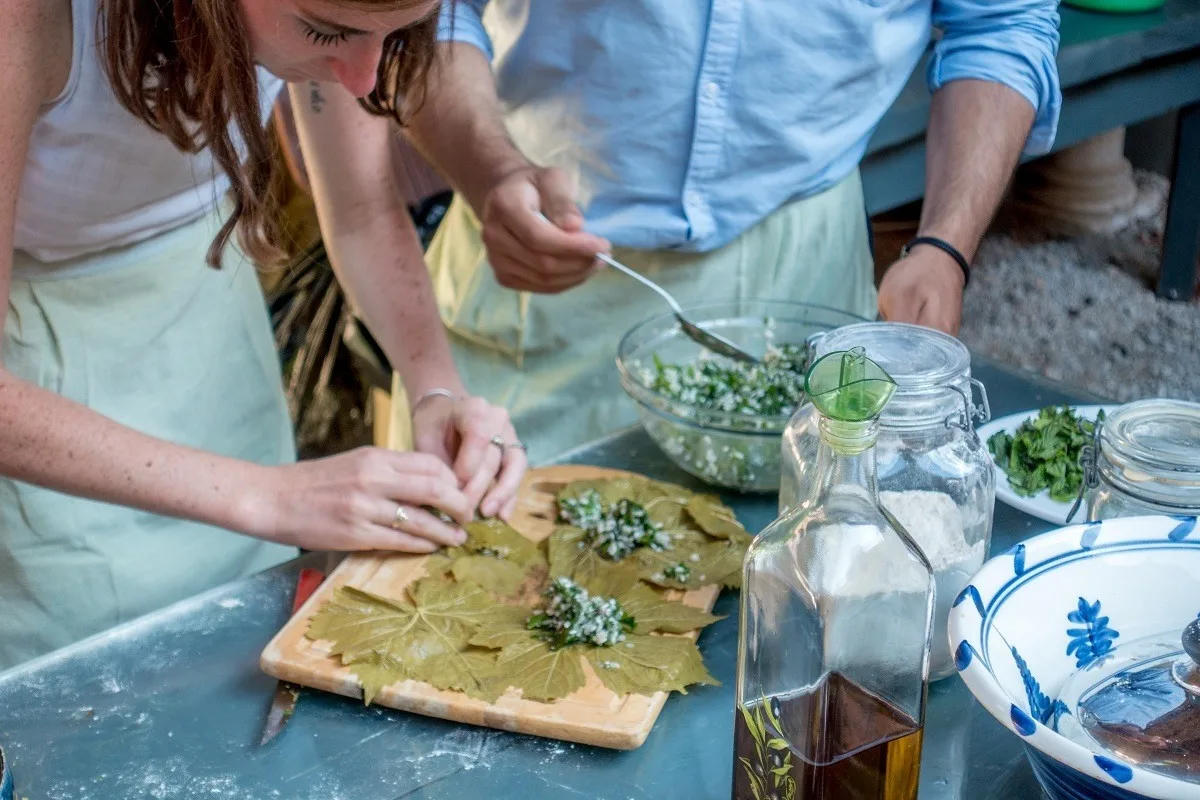
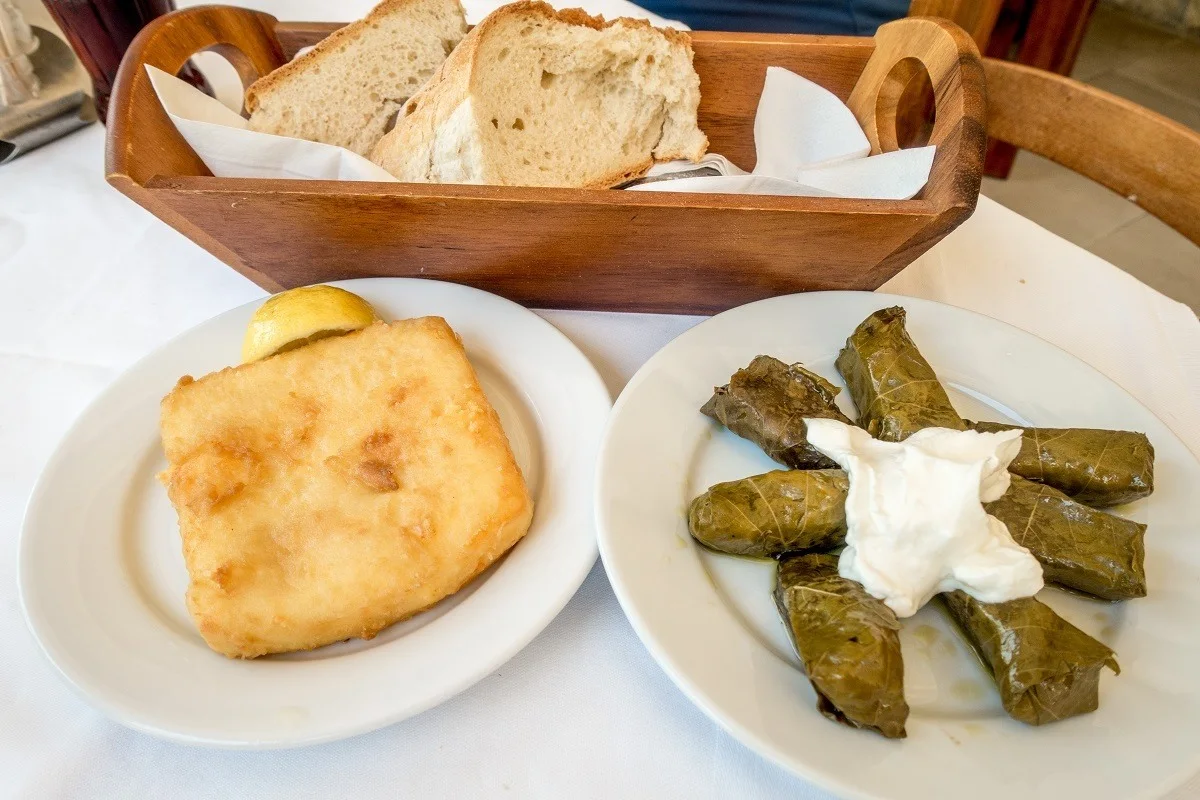
Dakos is another local specialty. It starts with rusk, a small, hard piece of bread that only softens with the addition of olive oil. It’s a bit like a very hard crouton. The rusk is topped with sheep’s cheese, ripe tomato, and olive oil.
Dolmades—stuffed grape leaves—are popular, too. Soaked in water to soften them, the leaves are filled with a mix of rice, herbs, and ground meat and then steamed. If you’ve never tried grape leaves before, this is the place to do it.
Around Crete, there is also a variety of salads, main courses from fish and lamb, and every way you can think of to incorporate vegetables like tomatoes, cucumber, and zucchini. We loved the food so much that we were even inspired to add more Greek food to our diet at home.
A trip is surprisingly affordable
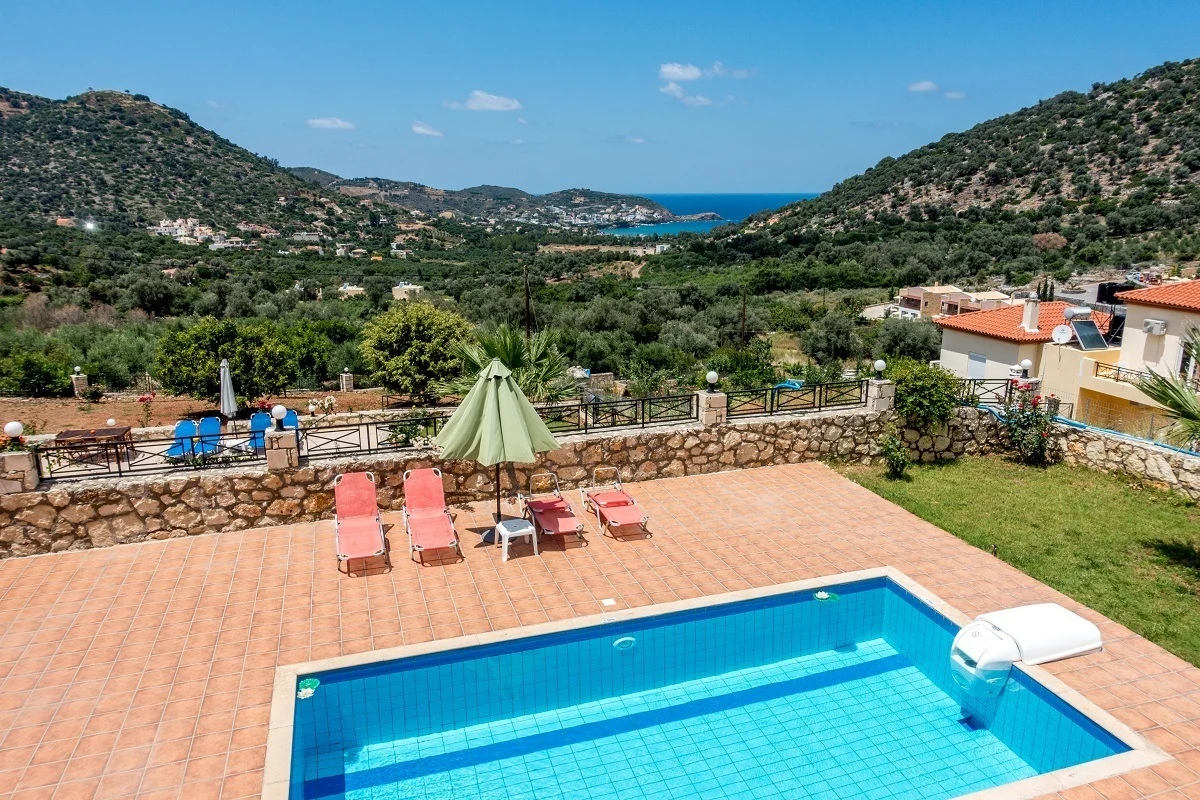
Most people probably wouldn’t assume Greece is an affordable place to visit. But, for a European destination, we found the costs for Crete reasonable.
Our apartment (much larger than we needed) with a private pool and stunning view was about €90 a night, and our car rental was about €30 per day with full coverage insurance (a must for the winding roads).
We were constantly shocked at how inexpensive the food was, especially considering the high quality. Many things–from the wine to the seafood–come from just a few miles away, which helps keep costs down. We always ordered more than we could eat because it all sounded so good, and we always paid dramatically less than what a similar meal would cost in the US. An excellent 3-course meal for two including wine was €40-50.
Is Athens on your list, too? See our 3-day Athens itinerary
It’s a mix of big cities and small towns
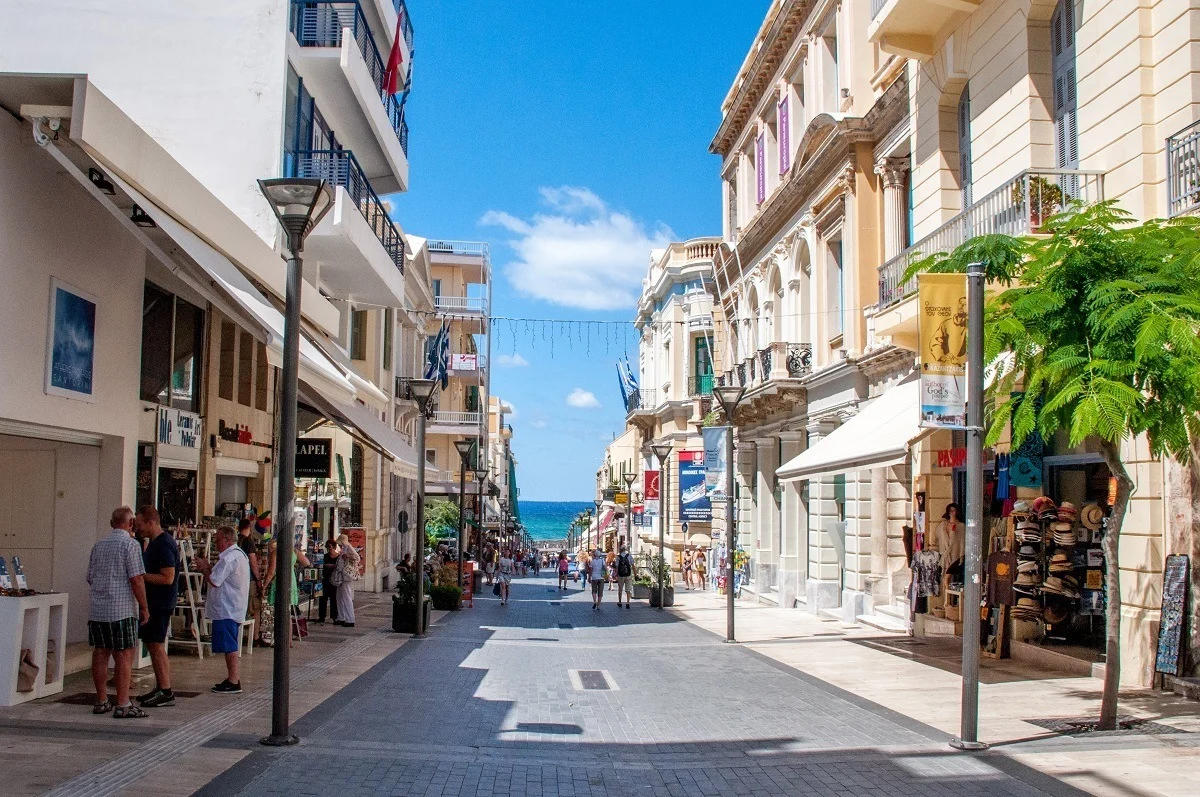
Our favorite way of traveling is visiting a mix of small towns and larger cities. Typically, that approach means we get the highlights of the fun things to do in the city coupled with the slower pace and ease of the smaller towns. It lets us explore all the sides of a place. In Crete, this was absolutely the right approach.
The two largest cities in Crete are Chania and the capital, Heraklion. You’ll find all the conveniences and attractions of a big city from Starbucks and fast food to some of the best museums in Greece.
Both Chania and Heraklion have gorgeous cathedrals, picturesque old towns, numerous restaurants, and lots of places to shop. They also have lots of people, traffic, construction, and other drawbacks that come with large cities. Each is worth at least a half-day visit, but we found the heart of Crete in the small towns.
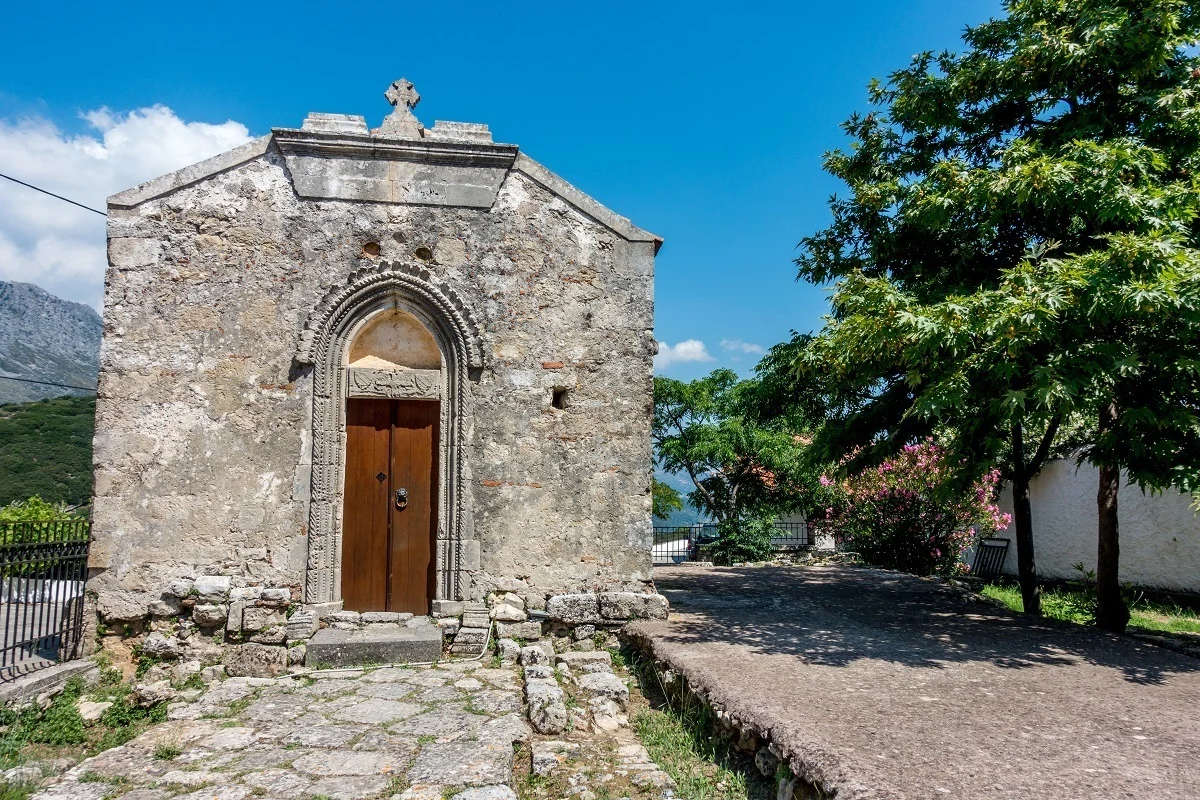
We stayed in the seaside village of Bali where we could walk into town and chat with the families that had visited this cute area each summer for decades. It only took two days to find our favorite spot on the beach and for the bartender to learn our order.
As we drove around, we sought out destinations that seemed more like wide spots in the road than tourist attractions and were handsomely rewarded. In Thronos, we stopped by the local café where the owner is the keeper of the key to the frescoed 14th-century church. In the village of Vamos, we took a cooking class in the old olive oil mill and walked the cobblestone lanes where the bright bougainvillea was in full bloom. Everywhere we went, we felt like we were discovering something truly special.
The wineries are fabulous
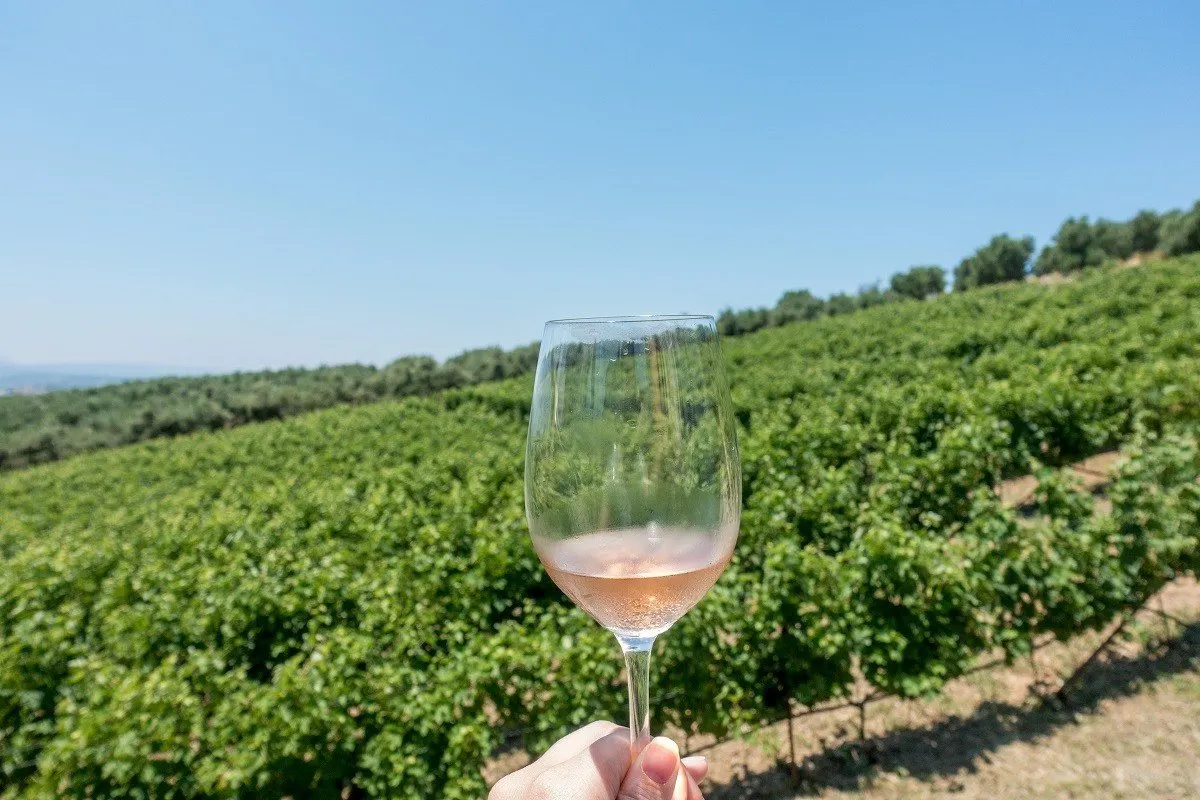
Discovering the fabulous wine in Crete was a very happy accident for us. If not for the little winery sign on a turnoff near our apartment, we might have overlooked it all together. Instead, what we found was a network of cute, mostly family-run wineries whose owners have been perfecting their craft for generations.
It turns out that Crete is responsible for 20 percent of the wine production of Greece—a sizable amount when you consider how small the island is compared to the rest of the country. The grape vines seem to stretch for miles, up and down the rolling hills and valleys.

Many of the varietals of Crete wine—such as Cabernet Sauvignon, Merlot, and Sauvignon Blanc—will be familiar to most wine drinkers. But there are also local varietals like Kotsifali, a mellow grape with plum notes that’s a bit like Merlot, and Liatiko, a sweeter red. We also enjoyed Crete’s flagship wine, Vidiano, a light white similar to Viognier.
If you’re not able to visit the wineries, local wine is widely available at restaurants. It’s good and very affordable, so consider trying something new.
Mountaintop views will stop you in your tracks
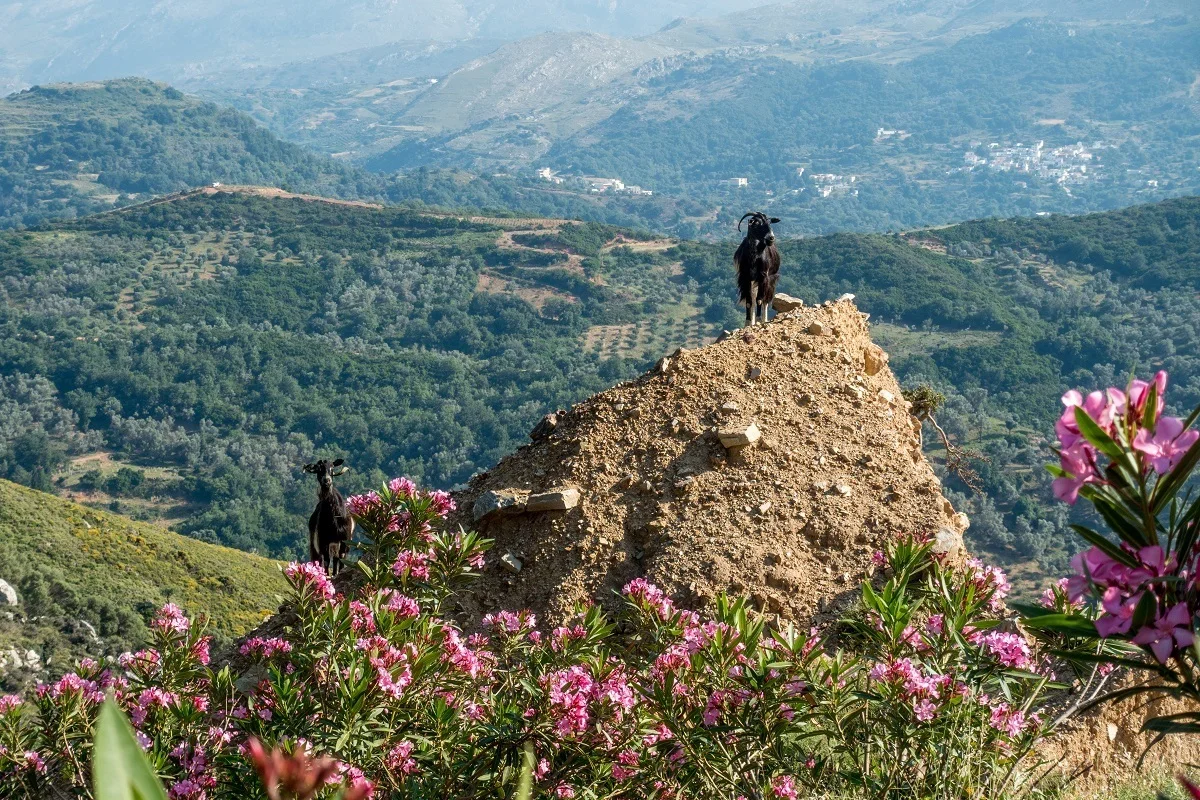
The beaches are gorgeous, but the landscape is made even more striking by its contrasts. Outside of the larger cities and beaches, much of Crete is mountainous.
Three different mountain groups cross across the center of the island, some soaring up to 8000 feet. The result is beautiful mountaintop views, dramatic gorges, and fertile valleys.
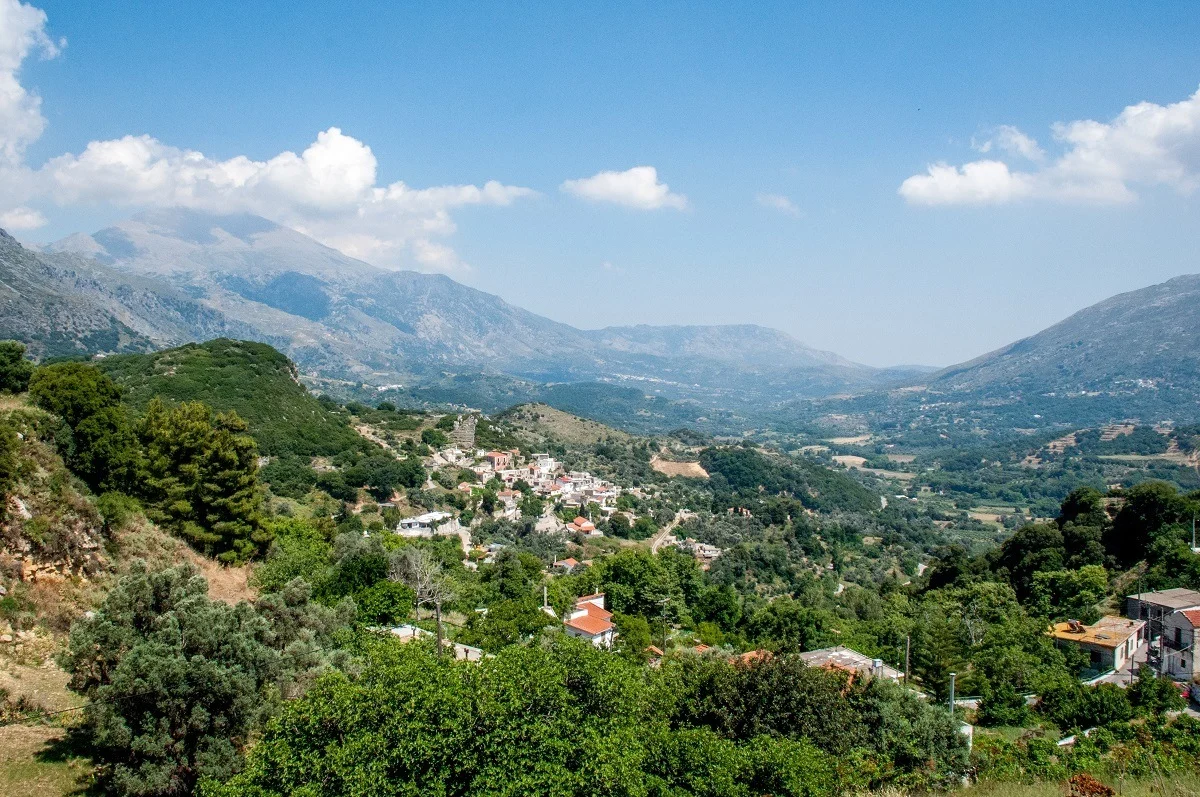
Driving across the island, we were regularly awed by the vistas and the views as we crossed over a hilltop or came around a pass. The hillsides were bright green, punctuated with the most brilliant purple and pink bougainvillea.
Several times on our road trips, we stopped our drive just to pull over to take photos. The views were at once amazing and nothing in particular—not a sign-posted scenic viewpoint or roadside attraction but just the beauty of the island.
Historical sites have a story
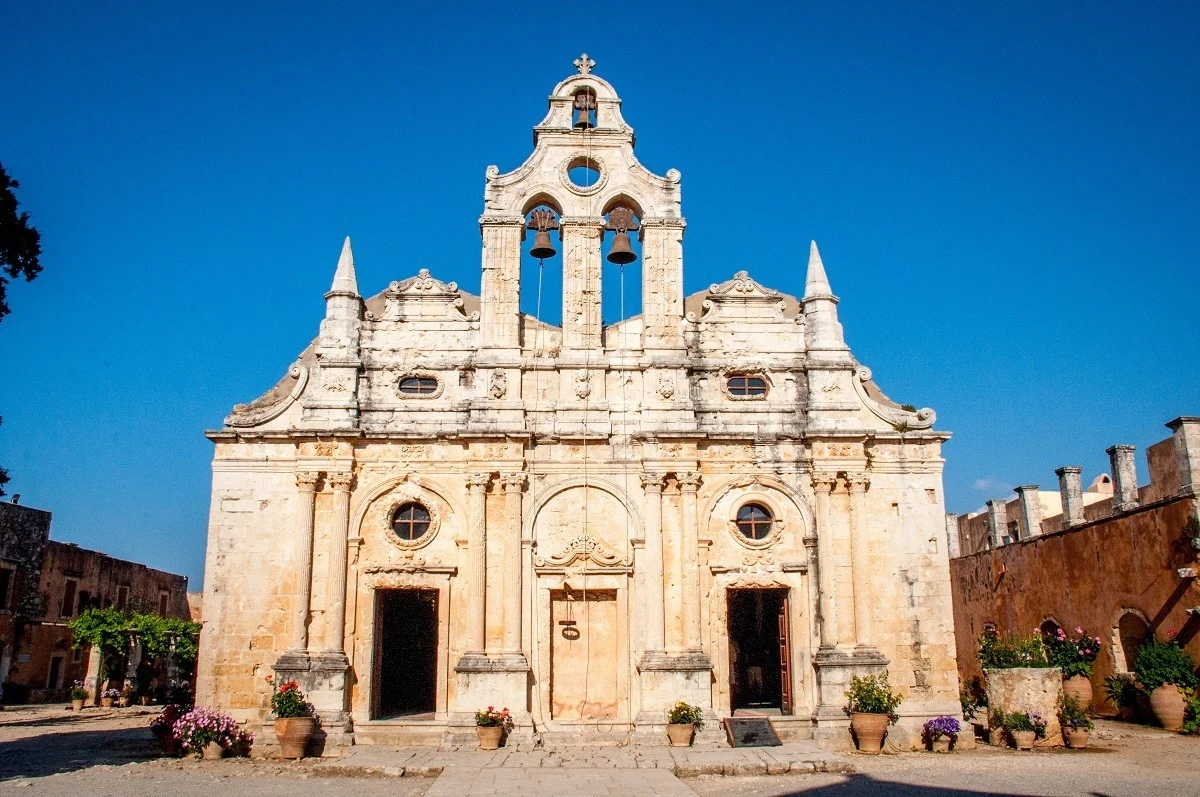
Crete is full of remarkable buildings and architecture.
One of the most interesting ones we saw was Arkadi Monastery. In a spot that feels like the middle of nowhere, the magnificent façade of Arkadi Monastery rises from the countryside. The limestone church was built when Crete was a Venetian colony, which accounts for many of the Renaissance influences in its design. When we entered through the main gate, the church’s aches, small turrets, and exposed bells were breathtaking in the late afternoon sun.
In addition to its beauty, the Monastery has a long history. Its roots date to the 5th century, and the current church dates from the 1500s.
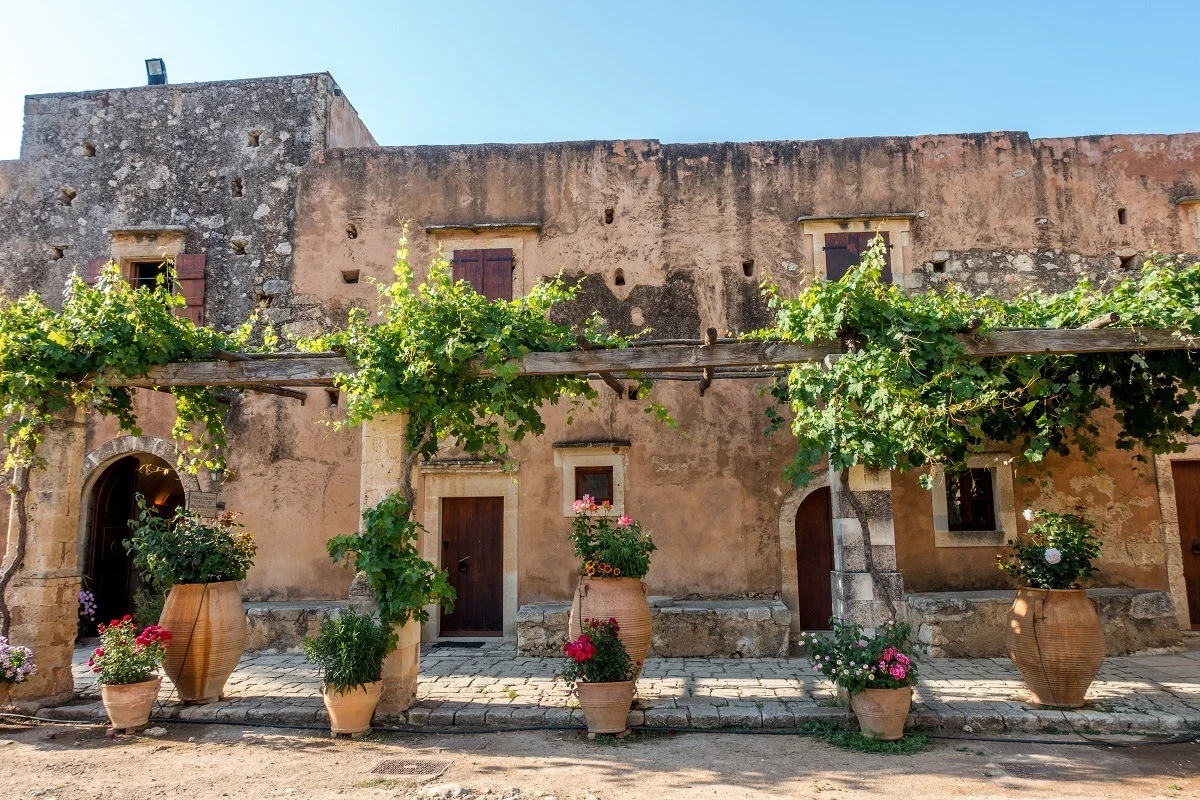
Arkadi is most well-known for its role in the Cretan resistance to Ottoman rule during the 1866 Cretan revolt. After three days of battle, the abbot ordered the hundreds of citizens who had taken refuge at the Monastery to blow up barrels of gunpowder, sacrificing themselves rather than surrendering to the Ottomans. The event is seen as a major milestone in Crete’s struggle for independence.
On the eastern side of Crete two hours from Arkadi, you’ll find Spinalonga island. In 1579, the Venetians built a huge fortress here on the ruins of an ancient acropolis. It remained under their control for over 130 years, long after the rest of Crete fell to the Ottomans. You can still explore the passageways and lookout points of the fortress today.

In the 1900s, the island became a leper colony where people with leprosy were isolated. Though conditions were sometimes harsh and the colony members suffered due to their disease, a true community developed here with a hospital, priest, and even shops.
Visitors can wander the empty streets, view the cemetery, and see the dilapidated dormitories where the lepers lived. You get a sense for the uncertainty and isolation they must have felt here, making this exceptional setting one of the most interesting places to go.
It’s easy to get to other islands
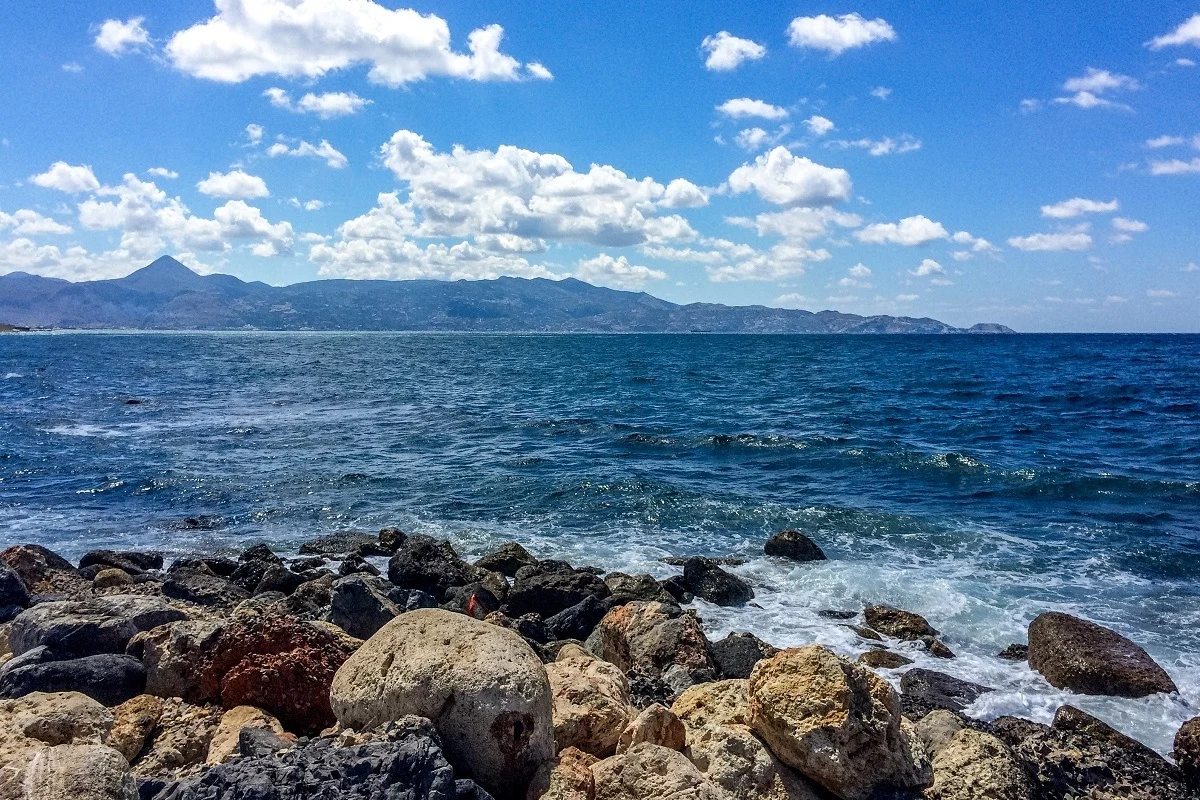
There are enough things to do in Crete to occupy your time for a week or more. But many people who visit the Greek Islands want to see more than one (ourselves included). If you’re in the island hopper group, it’s important that your destinations are easy to travel between.
There are three airports on Crete—one in Chania, one in Heraklion, and one (much smaller) in the eastern city of Sitia. You can find direct flights to Rhodes and Kos from Crete, and you can reach other islands by plane, often with a layover in Athens.
Depending on your destination, a ferry may also be a good option for islands nearby. We had a comfortable, 2-hour trip to Santorini on the ferry. In the summer, the boat continues, making stops in Mykonos, Ios, Naxos, and Paros. You can bask in the sun across the Aegean like it’s your full-time job.
The city harbors are lively
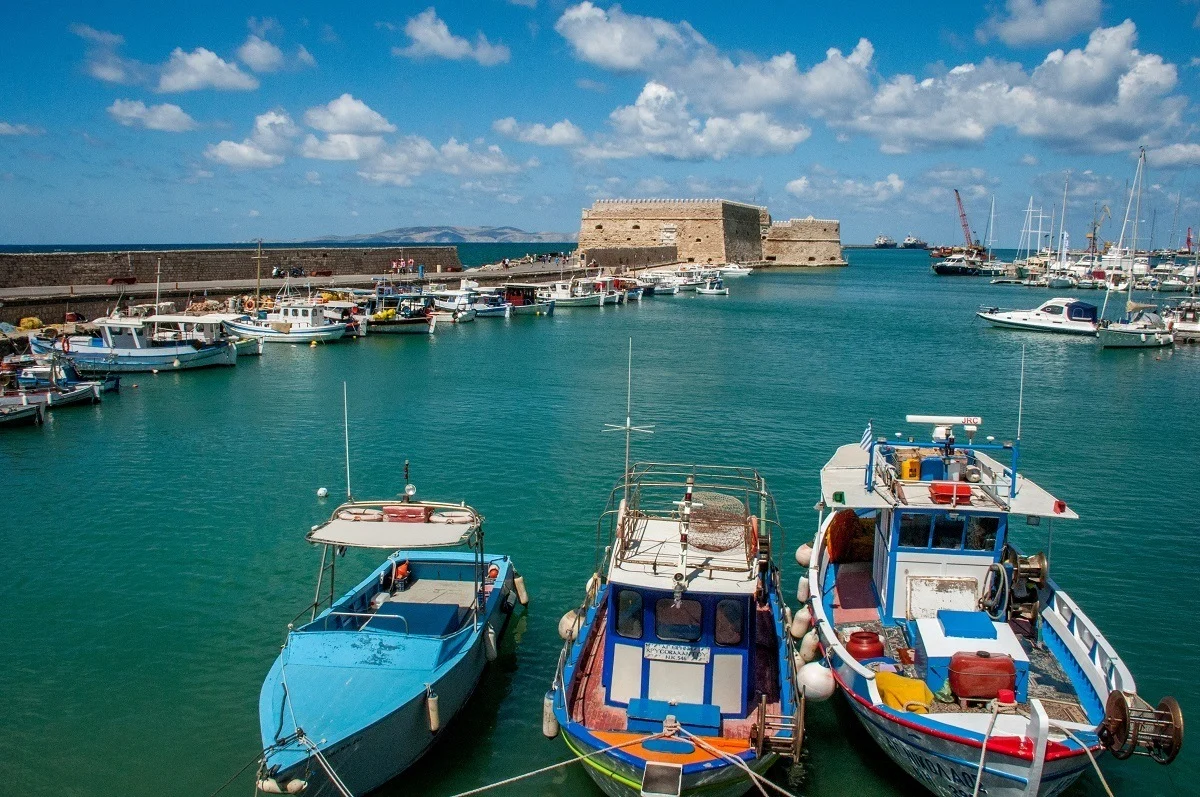
Chania, Heraklion, and Rethymno all have expansive old harbors dating from Venetian times. Once critical trading points for republics across the Mediterranean, the harbors are now space for local fishermen returning with the day’s catch.
In Chania and Rethymno, the colorful seaside areas are dotted with shops and numerous restaurants with waterfront views. In the evenings, locals and tourists stroll along the pedestrian-only promenades at sunset. Both cities also boast Egyptian lighthouses that make the harbors even more lovely for visitors.
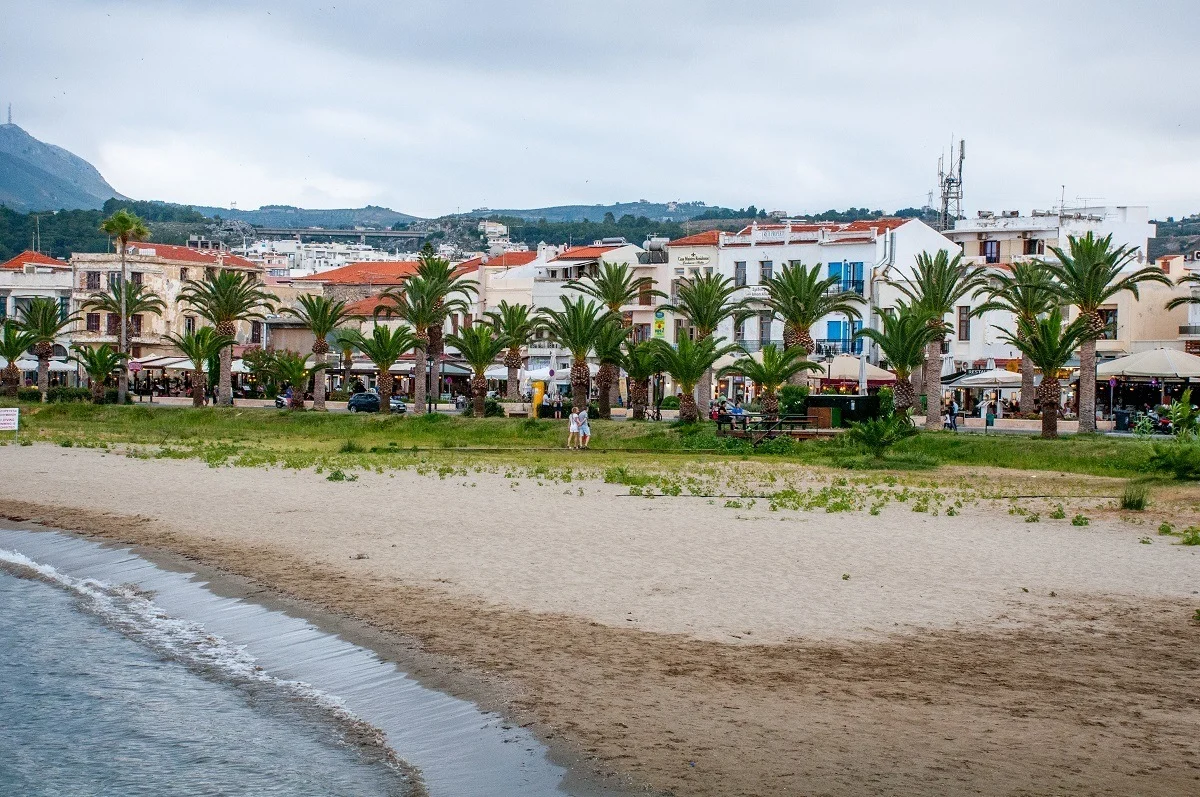
Heraklion’s harbor has slightly less waterfront real estate, but it has a 16th-century Venetian fort at the entrance to the old harbor. Still in good condition, the Koules fortress is open to the public and offers great views of the port.
There is lots of room to spread out
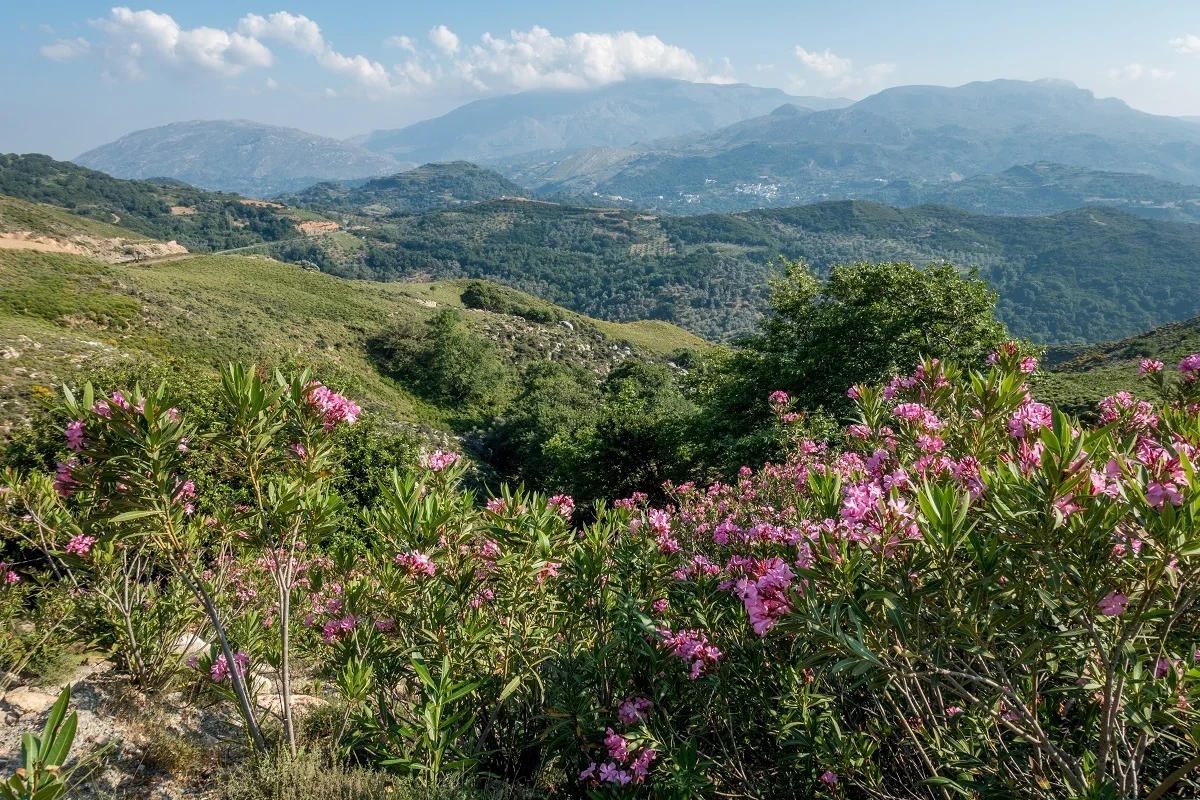
Crete is big. At 160 miles long and about 30 miles wide, coast to coast, there is a lot of spare space, which is just how we like it on vacation—the chance to find our own corner of solitude.
Nothing will ruin our good time faster than being caught in a crush of people, waiting endlessly to get into a restaurant, or being stepped on at the beach because there are just too many people. Because of Crete’s geography, it’s not hard to get away from it all.
There are crowded places. Chania, Heraklion, and even Rethymno are large cities with a lot of things to do and see. But the great thing about Crete is that you can visit the busy places and stay in the center of the action if you chose to, or you can find a tiny village to sip wine and look out over the coast while enjoying the afternoon sea breeze.

Many of the Greek islands are extremely popular places. And for good reason. They’re insanely pretty. But some can be insanely crowded, too, especially if they’re cruise ship destinations like spectacular Santorini.
On Crete, you can craft the experience that fits your vacation style. If you want to scour Minoan ruins, nap on the beach, hike the gorges, wander the vineyards, or shop ‘til you drop, it’s all possible.

Best Time to Visit
High season in Crete is July to early September. Attractions are busier, and prices for accommodations are at their peak. The hot, sunny weather draws lots of people to the beaches, and the nightlife in the larger towns buzzes with energy.
May, June, September, and early October are shoulder season. The weather is good and the water is warm enough for swimming, at least in June and September. Nothing is overly crowded. While almost everything will be open for the season, if there’s a place you particularly want to visit, check the hours ahead of time if you’re coming in May or October.
In spring and fall, travel options are limited and businesses are more likely to be closed or have reduced hours. If you stick to larger cities like Chania, Heraklion, and Rethymno, you’ll find many more options than in smaller towns.

How to Get Here
If you’re flying to Crete, Chania in the west or Heraklion in central Crete are your most likely points of entry (the Sitia airport is quite small). They are served by larger carriers such as British Airways, Delta, and Lufthansa as well as low-cost carriers like EasyJet and Ryanair. Coming from the US, you will likely connect to Crete through London, Athens, or another European city.
Laura Longwell is an award-winning travel blogger and photographer. Since founding Travel Addicts in 2008, she has written hundreds of articles that help over 3 million people a year get the most out of their travel. In that time, she has visited nearly 60 countries on 5 continents, often returning to favorite destinations over and over again. She has a deep love of history, uncovering unexpected attractions, and trying all the good food a place has to offer.
In addition to Travel Addicts, Laura runs a site about her hometown of Philadelphia—Guide to Philly—which chronicles unique things to do and places to see around southeastern Pennsylvania. Her travel tips and advice appear across the web.


Kirstyn
Thursday 26th of May 2022
I lived in Crete for 16 months and go back whenever I can. When I can't be there, I enjoy reading lovely pieces like this that remind me of how amazing it is, and how much I can't wait to get back again!
Michel
Tuesday 12th of October 2021
Just got back from Crete, car is the most convenient way to travel there. The Observatory is the highest tarmac road on the island ( 1750m above sea level) mask are required indoors in shops
Lei Batliner
Saturday 3rd of July 2021
What's the best way to get from Chania to Herkaklion?
Lance Longwell
Tuesday 13th of July 2021
The fastest way is on the E75, assuming you have a car.
Cheryl
Thursday 27th of May 2021
We are going for a month. Any American items we should take with us to make our trip more comfortable?
Laura Longwell
Sunday 30th of May 2021
Nothing I can think of. Anything you would need should be easily available.
Katy
Tuesday 13th of October 2020
Thank you for this amazing article! I want to go here for sure. Is Greek the language most spoken on the island?
Laura Longwell
Thursday 15th of October 2020
Yes, and many also speak English.